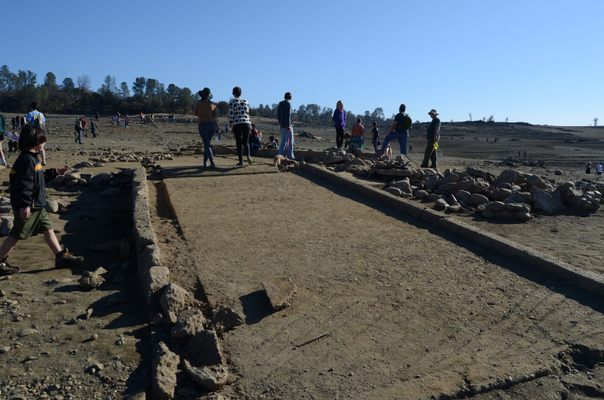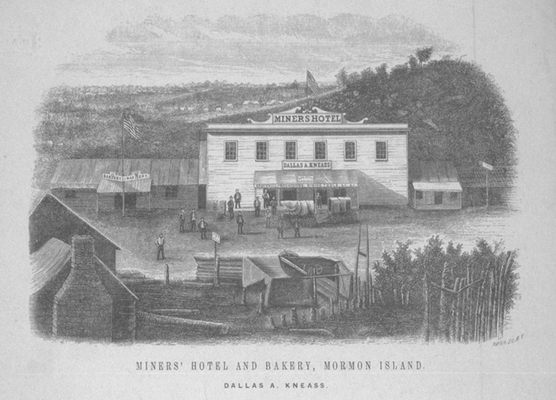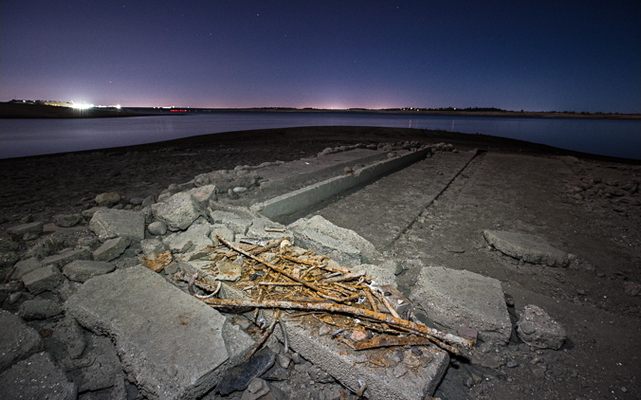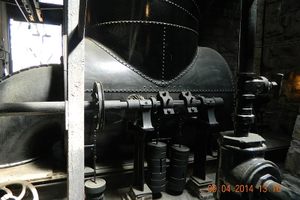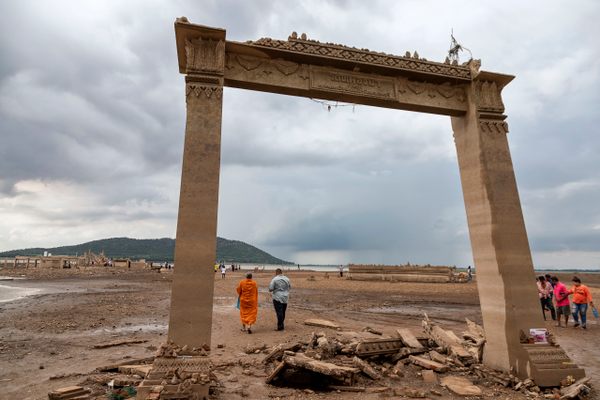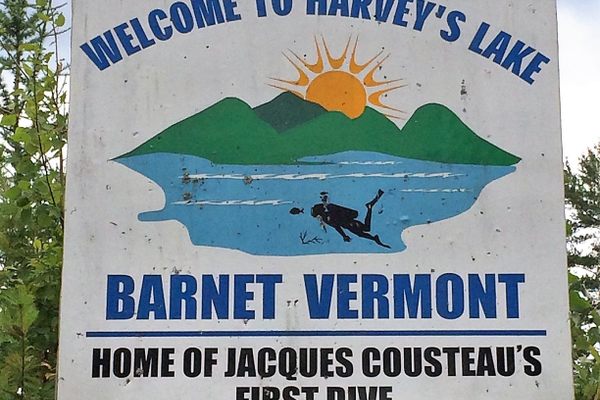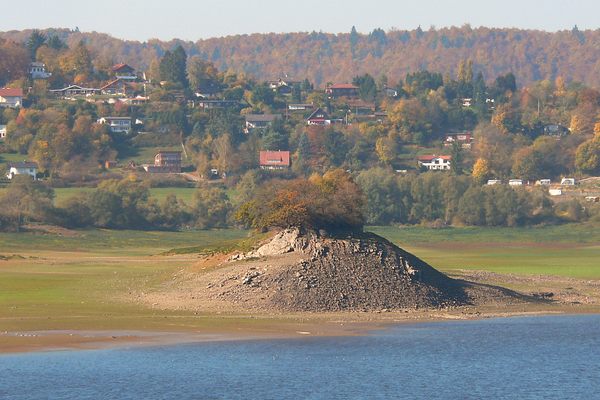About
Two months after the gold rush began with James Marshall’s discovery in Coloma, three Mormon miners made the second major gold strike 25 miles east of Sacramento on the American River.
Other prospectors followed, a substantial number of whom were of the Mormon faith, and a thriving gold rush settlement was founded. At its peak Mormon Island had a population of 2,500 and was the stopping point on the stage line between Sacramento and Coloma. There were four hotels, seven saloons, a winery, post office, school, cemetery, and numerous shops (including one operated by Sam Brannan, California’s first millionaire and the man credited with publicizing the discovery of gold, later a California Senator). But the good times soon ended when the newly built Sacramento Valley Railroad extending out to nearby Granite City (now called Folsom) and the town’s population declined. When a fire burned down most of the city in 1856 a mere 8 years after its founding, it was never rebuilt. In 1955, with the creation of Folsom Dam, the remains of the town were flooded by Folsom Lake. During dry years when the lake’s water levels are low many of the town’s remains are exposed and can be freely visited. As of January 2014, the lake's water levels are at their lowest in 37 years, meaning much, though not all, of the town's ruins are visible.
Related Tags
Published
January 27, 2014
